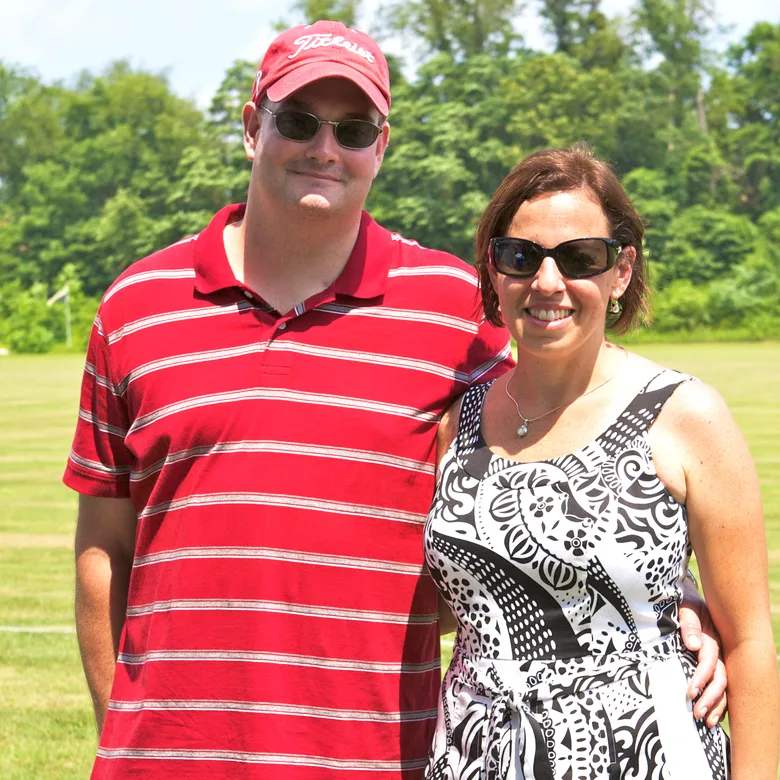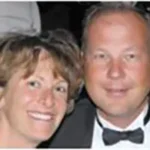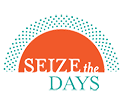Finding Bone Marrow Donors Became A Passion

Erik was a successful entrepreneur with a young family when he was diagnosed with leukemia. His battle against the disease, and the friends he made along the way, inspired him to found The There Goes My Hero Foundation. His organization’s mission: to restore hope to Leukemia patients and their families through increasing bone marrow registrants, providing nutritious meals, and supporting blood cancer research.
Listen
Transcript
My name’s EriKSauer. I was born on February 23rd, 1972, and I was diagnosed with acute myeloid leukemia on May 12th, 2008. I consult to financial advisors, helping with business development strategies.
fatigue was my biggest symptom. I never got sick. I just got really tired. I started getting headaches and fatigue at the end of 2007. my diagnosis wasn’t until, mid May. So I had this kind of slow and steady, decline my red blood count going down and down and down.
I had my official diagnosis with the bone marrow biopsy. First treatment was the induction, standard protocol induction. Normal protocol is to start treatment as soon as you’re diagnosed.
my wife was, nine and a half months pregnant. So the doctors here at Hopkins said, we’re going to give you a couple transfusions and send you home. Let your wife have her baby, and then you can come back and start your chemotherapy.
went home for a week, had the baby, enjoyed the baby for a week, and then on May 27th I started my first induction phase here at Hopkins, which lasted about 24 days. Dr.
Gore told me I would need a transplant as soon as he saw the cytogenetics leukemia that I had. So I, I knew before I even started treatment that I’d need a bone marrow transplant. The foundation began with the idea to help patients enduring long term hospitalizations associated with acute leukemia treatments. I had 107 days in the hospital, a newborn baby, and a seven year old son, who was, at that time, four and a half.
there was a lot going on at home, there was a lot going on in the hospital. one of the real convenient things was my friends and business associates arranged for meals delivered to my family, for about three months. and again, with my wife traveling from Bel Air every day to see me, having a newborn and a son, we thought we could replicate that through the foundation to help other people that, you know, just take that little convenience of having food, for the family provided while you were in treatment.
We also wanted to fund lines of research at Johns Hopkins. Because of how I’d gone through this and the information I had from my doctors and kind of understanding my need to understand what was happening I wanted to kind of further some of the research I had learned about during my treatment. So and then the last piece of my foundation is registering bone marrow donors. For me, it was not a process to worry about donors. I lost a donor who got sick with bronchitis during my treatment, and they found another So I was a lucky person, but I realized how lucky I was when I’ve had conversations with other leukemia patients in need of transplants, some of whom never got their donor, found their donor, some of whom needed to have half match transplants and, and, and thus had some issues, more issues with graft versus host than, I’ve had with a full match. I’m the founder of the non profit There Goes My Hero. Our mission is to help families enduring long term, treatments for blood cancer, provide nourishing meals fund blood cancer and stem cell research, and register bone marrow donors.
Well, in the last year, we’ve raised close to $60,000. We run an annual Apollo event up in Harford County at Ledoux Gardens. we have attendees come from all over the East Coast, and even a couple people come in from California and Colorado to attend.
we also have started a pilot program at Johns Hopkins. working with social workers over at the Weinberg building. and they are identifying patients who have a financial need, and we’re providing their families, them and their families, with, with meals. The experience has allowed me to stay connected with the community I was connected with when I was hospitalized. I’m still connected with social workers, nurses, and people going through the transplant process.
And I feel like I can be That example of how you can get through this and use it as something valuable instead of a horrific experience that it was. It’s something that you can turn around and make it extraordinarily positive.
To me, the most rewarding component is also the most difficult component, and that’s engaging. The patients who are experiencing what I experience right now. Early on, the people that I came in contact with, most of them survived. All of them survived, actually, which statistically is unusual. but recently, the people that I’ve come in contact with, several have passed away.
they’ve been 13 14 years old, young, I feel good about engaging them and being there with people experiencing this, but it’s difficult to see people I’ve connected with not survive. I started my own business, three years before my diagnosis. I help people with their businesses and most of my clients own their own businesses.
I have an affinity for the entrepreneurial spirit. I often think about, whether it be with a business or with my foundation is how can you have the most impact? And in my mind, when you control circumstances, you can have the most impact. instead of, working for another business, or foundation that’s maybe bigger in scope, I decided that, you know, creating something that was in my likeness, if you will, and would allow me to do the things that I wanted to do to help people, this was the route that, that, that would work best for me. I’ve had the opportunity to tell my story to groups of adults. I had an opportunity to tell my story really soon after treatment to 500 8th graders. being able to look across an audience and see that you’ve engaged them and they get it.
Those experiences where, where you see how sharing your experience with others and, and how people get engaged by that and, and actually can be called to action that’s the evolution of why this foundation has become what it is.





